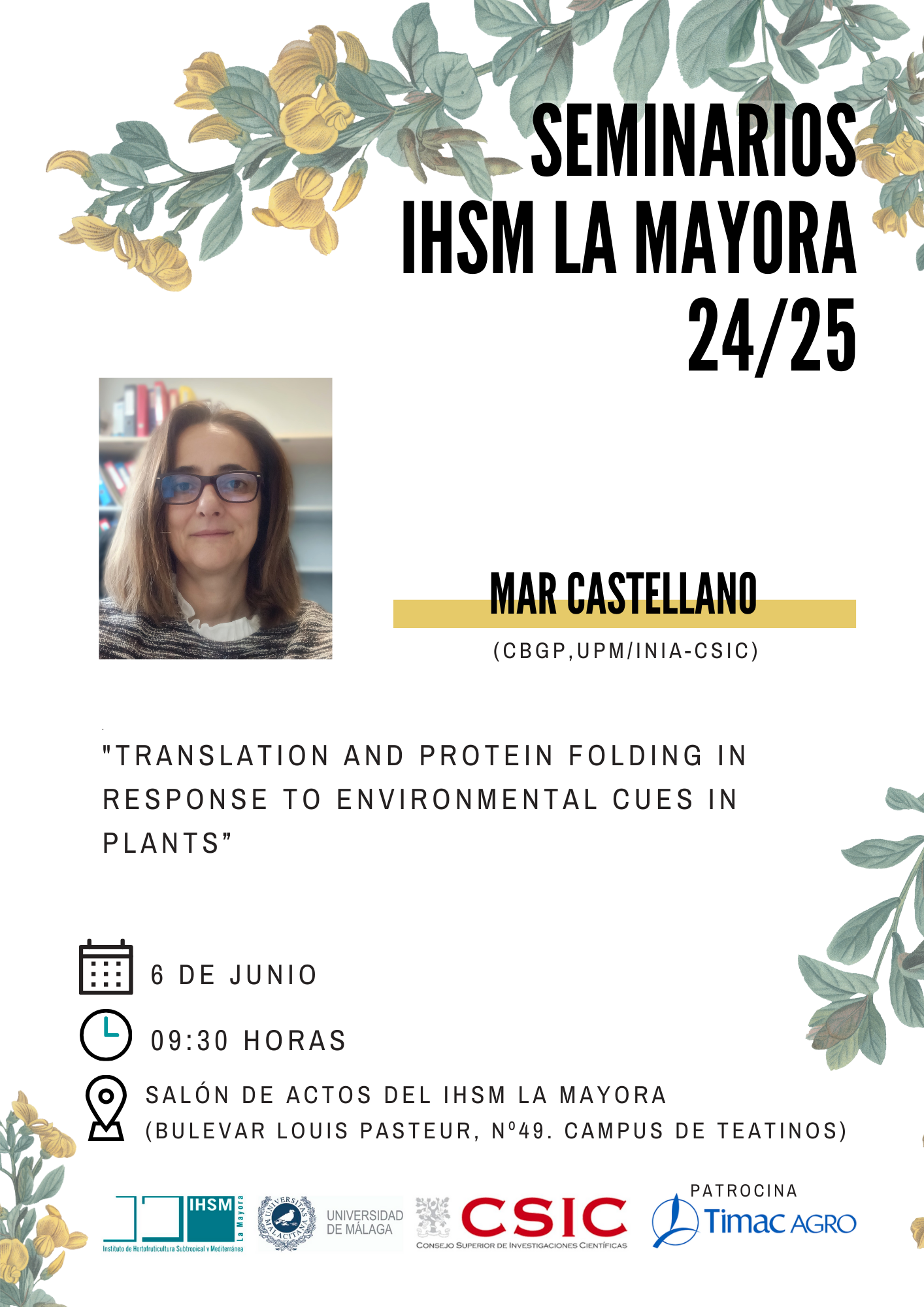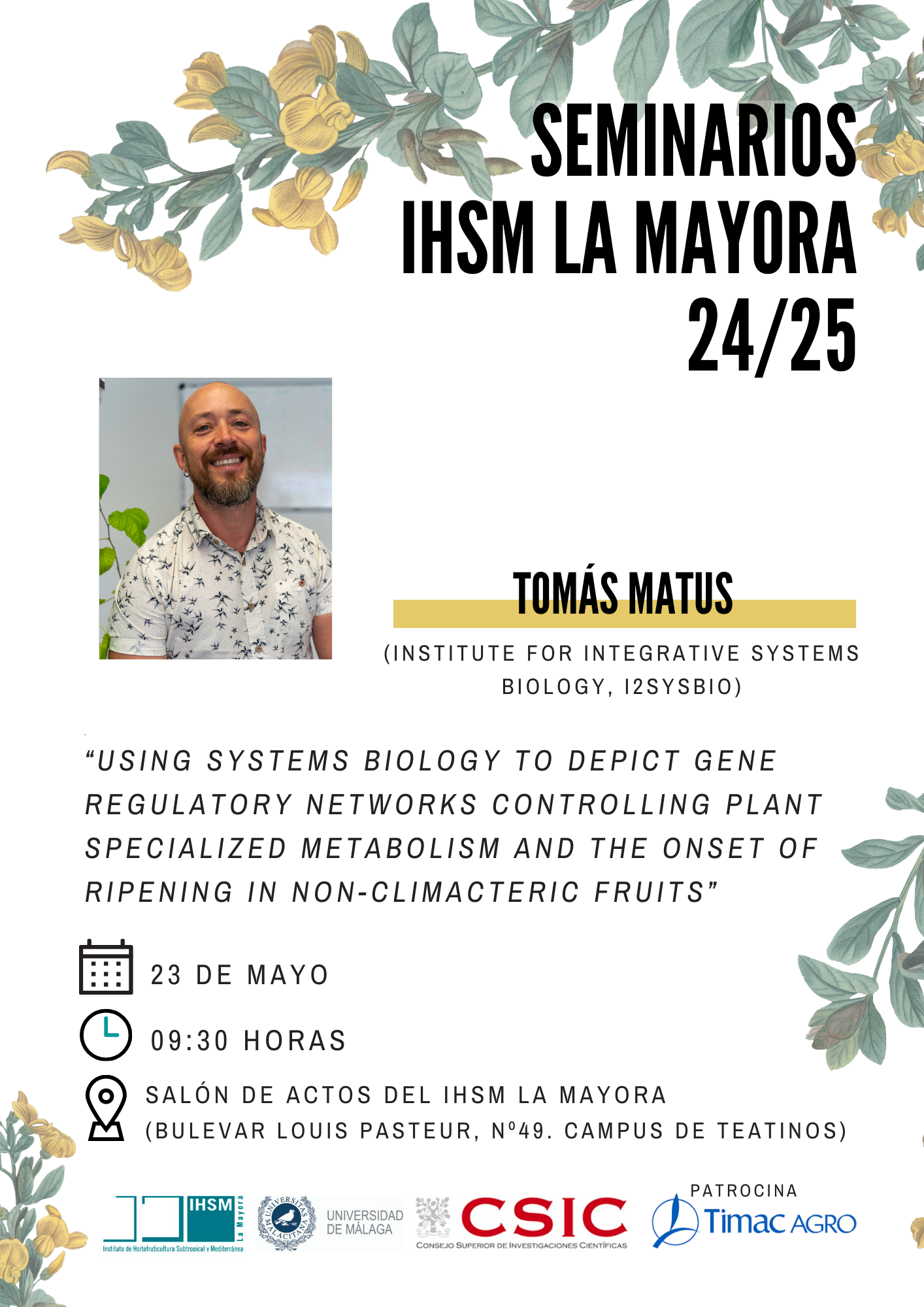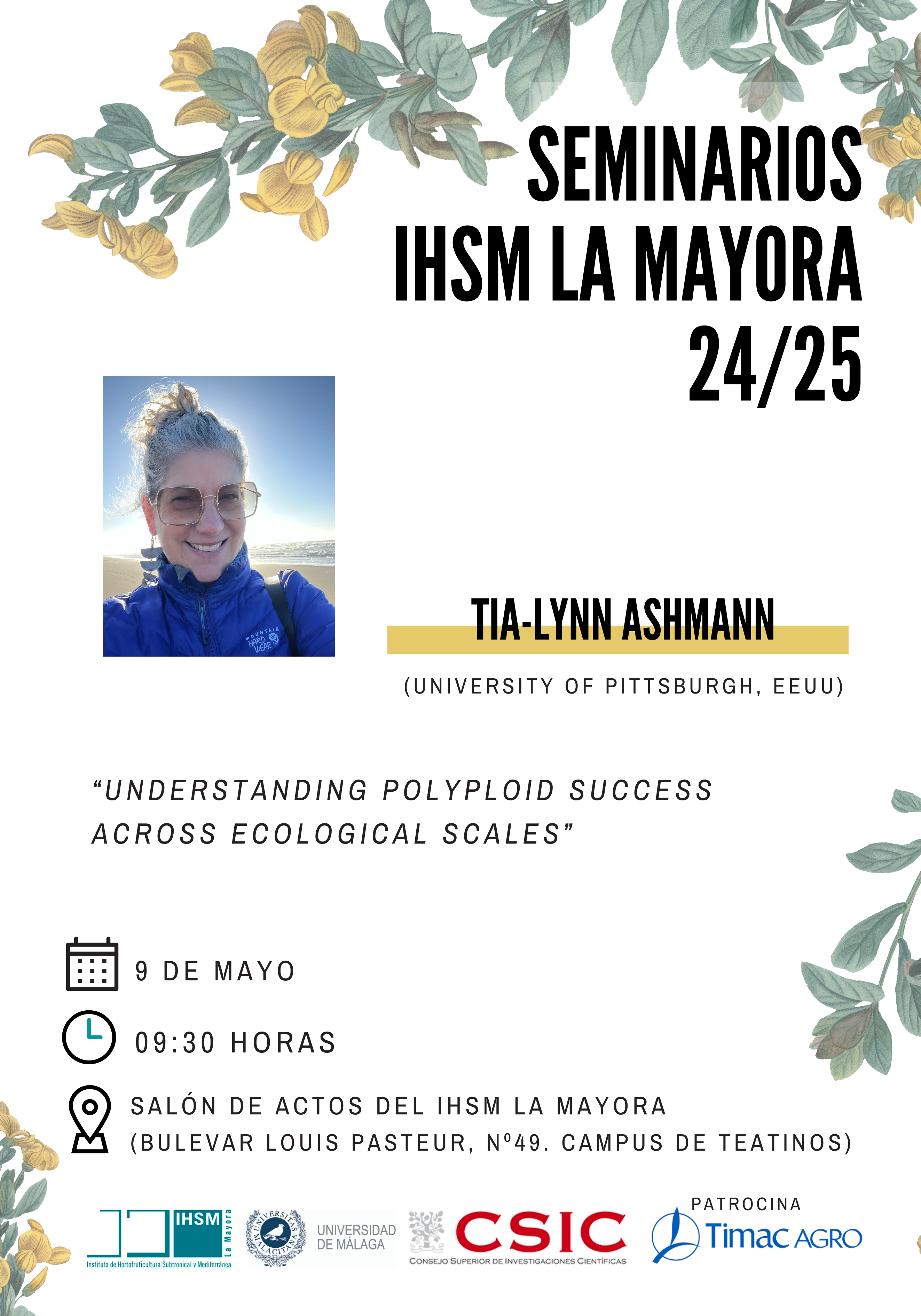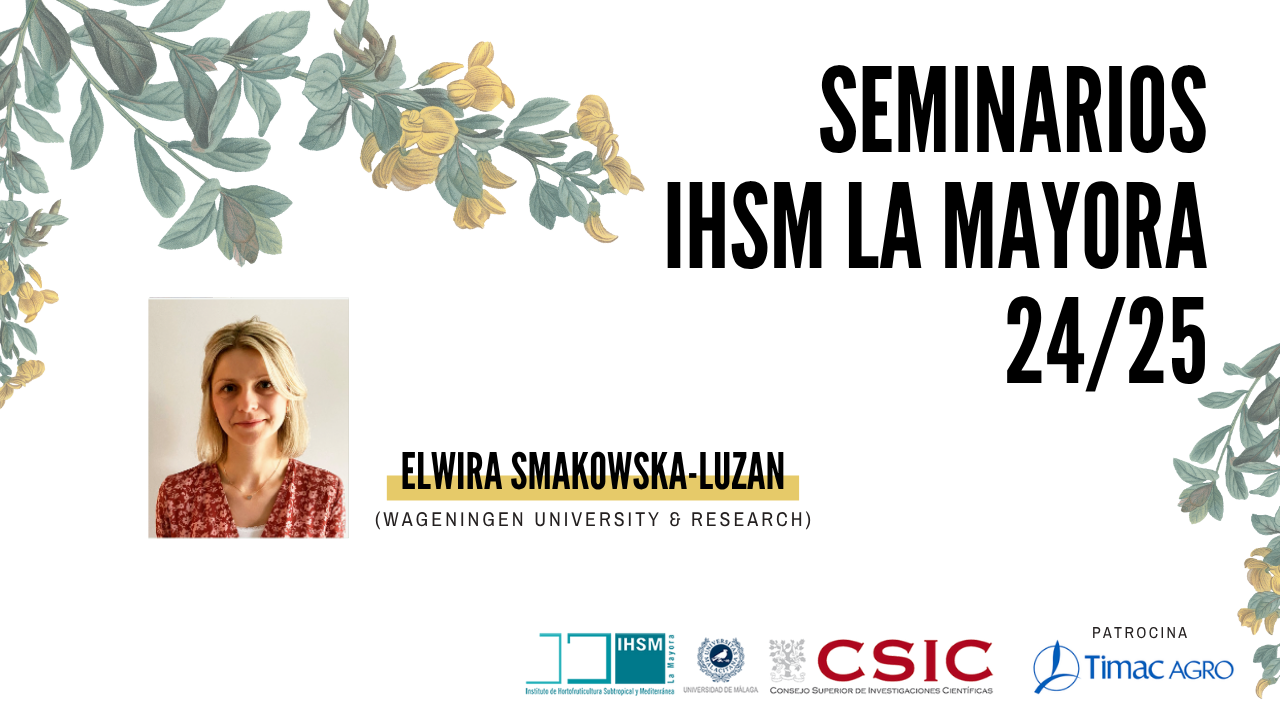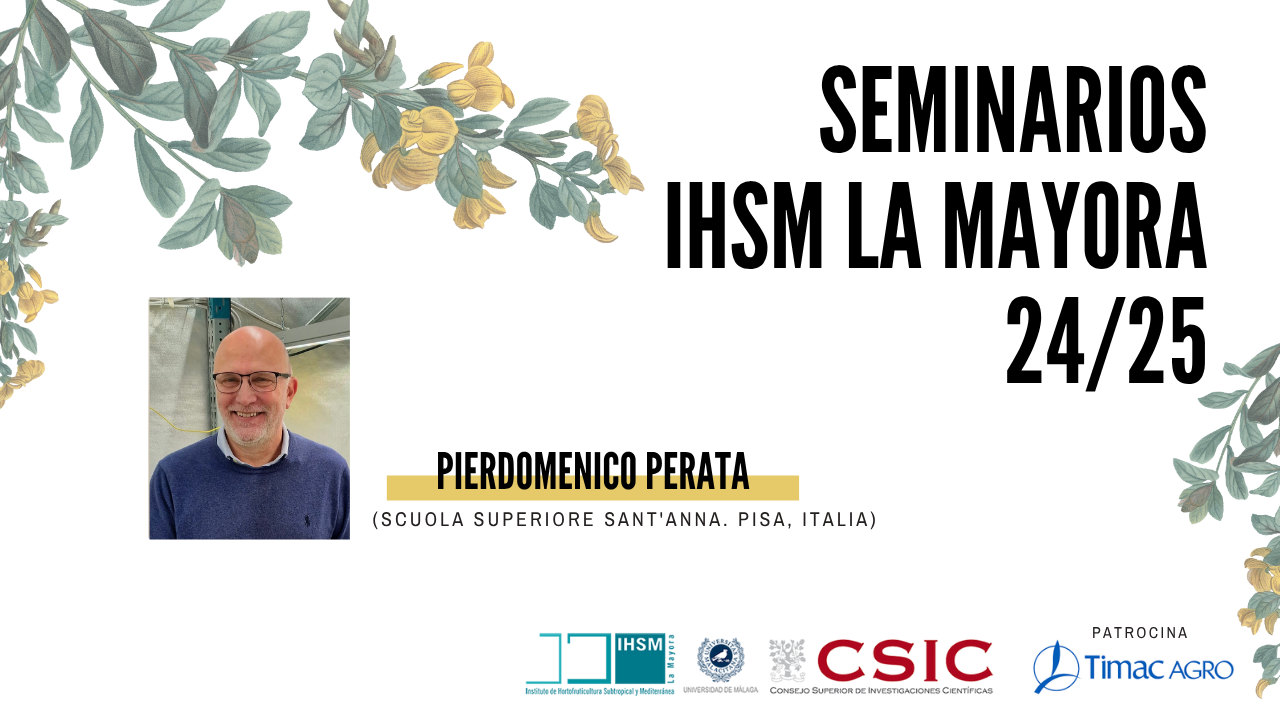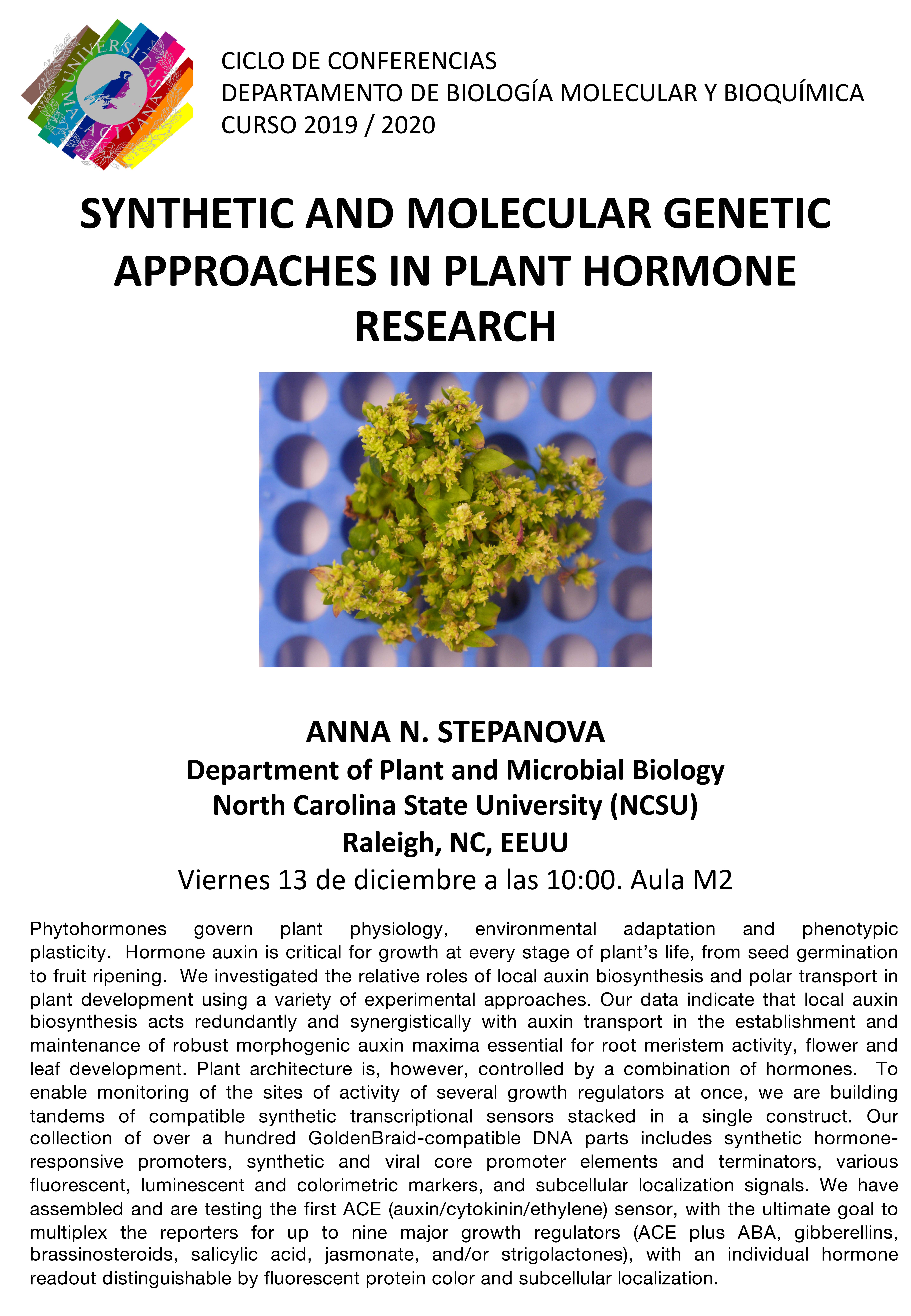
Seminarios internacionales en la Universidad de Málaga. Anna Stepanova Assistant Professor, North Carolina State University . Raleigh, North Carolina
Phytohormones govern plant physiology, environmental adaptation and phenotypic plasticity. Hormone auxin is critical for growth at every stage of plant’s life, from seed germination to fruit ripening. We investigated the relative roles of local auxin biosynthesis and polar transport in plant development using a variety of experimental approaches: pharmacological treatments with chemical inhibitors of auxin biosynthesis and transport, an array of auxin transport and production mutants, ectopic expression of auxin biosynthetic genes under the control of tissue-specific promoters, inducible CRE-LOX systems, recombineering-based whole-gene fusions with fluorescent protein reporters, and grafting. Our data indicate that local auxin biosynthesis acts redundantly and synergistically with auxin transport in the establishment and maintenance of robust morphogenic auxin maxima essential for root meristem activity, flower and leaf development. Plant architecture is, however, controlled by a combination of hormones. To enable monitoring of the sites of activity of several growth regulators at once, we are building tandems of compatible synthetic transcriptional sensors stacked in a single construct. Our collection of over a hundred GoldenBraid-compatible DNA parts includes synthetic hormone-responsive promoters, synthetic and viral core promoter elements and terminators, various fluorescent, luminescent and colorimetric markers, and subcellular localization signals. We have assembled and are testing the first ACE (auxin/cytokinin/ethylene) sensor, with the ultimate goal to multiplex the reporters for up to nine major growth regulators (ACE plus ABA, gibberellins, brassinosteroids, salicylic acid, jasmonate, and/or strigolactones), with an individual hormone readout distinguishable by fluorescent protein color and subcellular localization.



